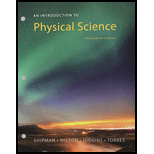
(a)
The ionic charge for the given element chlorine
( Cl )
(a)
Answer to Problem 14E
Explanation of Solution
Given Info: Refer to the periodic table figure 11.24.
Explanation:
Chlorine belongs to the group 7A. The elements of group 7A have one electron less than the noble configuration thus tends to gain one electron and complete their octet.
The elements of group 7A gain one electron and form an anion with charge
Conclusion:
Therefore, the ionic charge for chlorine
(b)
The ionic charge for the given element lithium
( Li )
(b)
Answer to Problem 14E
Explanation of Solution
Given Info: Refer to the periodic table figure 11.24.
Explanation:
Lithium belongs to the group 1A. The elements of group 1A have one electron more than the noble configuration thus tends to lose one electron and complete their octet.
The elements of group 1A lose one electron and form a cation with charge
Conclusion:
Therefore, the ionic charge for lithium
(c)
The ionic charge for the given element selenium
( Se )
(c)
Answer to Problem 14E
Explanation of Solution
Given Info: Refer to the periodic table figure 11.24.
Explanation:
Selenium belongs to the group 6A. The elements of group 6A have two electrons less than the noble configuration thus tends to gain two electrons and complete their octet.
The elements of group 6A gain two electrons and form an anion with charge
Conclusion:
Therefore, the ionic charge for selenium
(d)
The ionic charge for the given element strontium
( Sr )
(d)
Answer to Problem 14E
Explanation of Solution
Given Info: Refer to the periodic table figure 11.24.
Explanation:
Strontium belongs to the group 2A. The elements of group 2A have two electrons more than the noble configuration thus tends to lose two electrons and complete their octet.
The elements of group 2A lose two electrons and form a cation with charge
Conclusion:
Therefore, the ionic charge for strontium
(e)
The ionic charge for the given element gallium
( Ga )
(e)
Answer to Problem 14E
Explanation of Solution
Given Info: Refer to the periodic table figure 11.24.
Explanation:
Gallium belongs to the group 3A. The elements of group 3A have three electrons more than the noble configuration thus tends to lose three electrons and complete their octet.
The elements of group 3A lose three electrons and form a cation with charge
Conclusion:
Therefore, the ionic charge for gallium
(f)
The ionic charge for the given element phosphorous
( P )
(f)
Answer to Problem 14E
Explanation of Solution
Given Info: Refer to the periodic table figure 11.24.
Explanation:
Phosphorous belongs to the group 5A. The elements of group 5A have three electrons less than the noble configuration thus tends to gain 3 electrons and complete their octet.
The elements of group 5A gain 3 electrons and form an anion with charge
Conclusion:
Therefore, the ionic charge for phosphorous
(g)
The ionic charge for the given element radon
( Rn )
(g)
Answer to Problem 14E
Explanation of Solution
Given Info: Refer to the periodic table figure 11.24.
Explanation:
Radon belongs to the group 8A. The elements of group 8A are called noble gas elements. They have completely filled octet and are very stable. They do not gain or lose electrons because they are already very stable.
Thus, the elements of group 8A have an ionic charge of
Conclusion:
Therefore, the ionic charge for radon
(h)
The ionic charge for the given element silicon
( Si )
(h)
Answer to Problem 14E
Explanation of Solution
Given Info: Refer to the periodic table figure 11.24.
Explanation:
Silicon belongs to the group 4A. Elements of group 4A have 4 valence electrons and 4 electrons less than noble configuration. Elements of group 4A do not form ions generally because it is very difficult to gain or lose 4 electrons to complete the octet. Thus, the elements of group 4A have an ionic charge of
Conclusion:
Therefore, the ionic charge for silicon
Want to see more full solutions like this?
Chapter 12 Solutions
Bundle: An Introduction to Physical Science, 14th Loose-leaf Version + WebAssign Printed Access Card, 14th Edition, Multi-Term
 An Introduction to Physical SciencePhysicsISBN:9781305079137Author:James Shipman, Jerry D. Wilson, Charles A. Higgins, Omar TorresPublisher:Cengage Learning
An Introduction to Physical SciencePhysicsISBN:9781305079137Author:James Shipman, Jerry D. Wilson, Charles A. Higgins, Omar TorresPublisher:Cengage Learning

